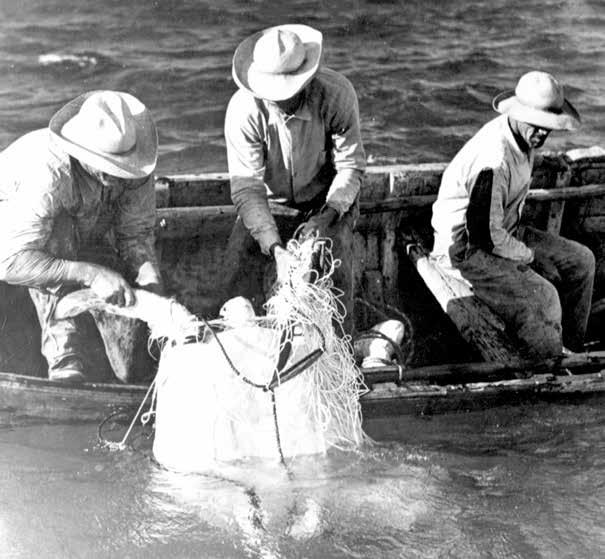
2 minute read
BACK BY POPULAR DEMAND... LECTURE COVERS ‘LAST TURTLEMEN OF THE CARIBBEAN’
Event Takes Place March 17 At Tropic Cinema
Due to popular demand, the Key West Museum of Art & History has extended the duration of the “Bahama Village: Relics of a Fading Community” exhibit. Visitors can immerse themselves in the history and culture of the historically black neighborhood until May 21.
Originally scheduled to leave March 19, this exhibit features never-before-on-view objects including a football helmet and shoulder pads from Frederick Douglass School, musical instruments from the estate of William McKinzie, a 19th-century Sanchez family bible and a suit once belonging to illustrious local musician Coffee Butler. These items, along with several others, tell the inspiring history, culture and contributions of the black residents.
“In collaboration with Florida Humanities, this exhibition aims to build cultural equity by telling narratives of the Black community’s significant contributions,” said Cori Convertito, Key West Museum of Art & History curator. “We seek to redress a serious omission: that the substantial impacts of people of color are under-represented in our island’s historical narrative. The contributions of these skilled workers have been marginalized, when in truth, their engagements were vital and valuable.”
According to Convertito, the biggest takeaway from the exhibit is that Bahama Village is more
Residents of Bahama Village outside the Key West Lighthouse. Bahama Village is the subject of an exhibit that has been extended through May 21 at the Key West Museum of Art & History, 281 Front St. KWAHS/Contributed than neighborhood designation. The exhibit recognizes its crucial position in the growth of Key West. Blacks built homes, ran businesses, sought employment in a variety of island industries, facilitated the popularity of the Southernmost Point and served their country valiantly in several global conflicts.
“Bahama Village has many educational and enriching components that hit multiple different learning styles,” said Convertito. “For example, visitors who have little knowledge of the origins of our black community, or its settlement pattern, can learn through images, artifacts and storytelling. History and stories are woven together through various events that shaped the Black and Indigenous cultures of Key West.”
More information is available from Convertito at 305-295-6616 x507 or cconvertito@kwahs.org.
— Contributed
The Key West Art & Historical Society will offer a free lecture by Sharika Crawford titled, “The Last Turtlemen of the Caribbean: Labor, Conservation and Boundary Making from the Cayman Island to Key West.” The lecture will be held at Tropic Cinema, 416 Eaton St., on Friday, March 17 at 6 p.m. The program is free, but advance registration is required to ensure seating. To register online, visit kwahs.org/ dss-crawford.
Crawford will discuss the entangled histories of peoples and commodities that circulated across the greater Caribbean, which connected places like Key West to the Cayman Islands and further south toward Nicaragua and Costa Rica. The story of the turtle and its hunter, Crawford argues, came to play a significant role in shaping the maritime boundaries of the modern Caribbean.
Focusing on the 19th and 20th centuries, she traces and connects the expansion of turtle hunting to matters of race, labor, political and economic change, and the natural environment.
Crawford is associate professor of history at the U.S. Naval Academy in Annapolis. Her scholarship focuses on Latin America, the circum-Caribbean, and the West African nation of Ghana. Her book “The Last Turtlemen of the Caribbean: Labor, Conservation, and Boundary Making” was published by the University of North Carolina Press in 2020. This program is limited to 150 attendees.
More information is available from Cori Convertito at 305-295-6616 x507 or cconvertito@kwahs.org.
— Contributed








